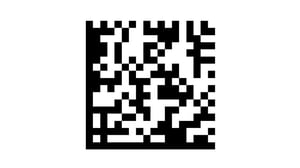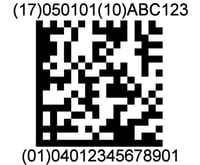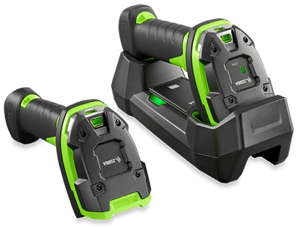Here is how GS1 Data Matrix Barcodes are structured.

 I recently wrote about new regulations being implemented in Eurpope and the US that require manufacturers to uniquely mark surgical devices at the time manufacture.
I recently wrote about new regulations being implemented in Eurpope and the US that require manufacturers to uniquely mark surgical devices at the time manufacture.
Effectively, all reusable surgical devices that are destined for the EU and US markets will need to be marked with a GS1 Data matrix barcode .
I also foreshadowed the likelihood that these regulations may be adopted in Australia and New Zealand.
While most of us know what a data matrix barcode looks like, not everyone is familiar with GS1.
GS1 is an international non-profit organisation that develops and maintains global standards for barcodes.
"Sounds boring right?"
But just for a moment imagine a world in which we didn't have barcodes.
Without barcodes sectors such as retail, healthcare, transport and logistics would be severely handicapped. They heavily rely on the efficiencies and traceability provided by barcodes.
Simply put, the role of GS1 is to standardise barcodes that label just about everything you buy or use.
The barcode on a can of Coca-Cola for example is not something that the manufacturer has designed for their own benefit.
For international companies to be compliant they must adopt the GS1 standard.
The GS1 Specification
You may have seen a bunch of numbers under a barcode and wonder what they mean. Well GS1 has defined that.
Standard GS1 barcodes have a structure similar to this:
(01)1234578912345(17)141120(21)1234AB(10)
The (01) section contains a number that identifies the manufacturer. It also contains a number that represents the model or part number of the item.
The Section (17) contains the expiry Date, (21) contains the Serial number and (10) contains the batch/Lot number
According to the UDI Regulations, the Data Matrix barcode should also display the code in human readable format.
Therefore it would look something like this:

As you can see however, there is far to much information for it to fit on many surgical devices. Therefore, the markings on most surgical devices may have the barcode only.


The problem is that in order to find out what the unique serial number of the item is, you need a 2D Data matrix scanner. Unfortunately, starting at around $3,000.00, they are a fairly expensive item.
In an upcoming blog I am going to take you through the different types of Scanning devices for reading etched 2D datamatrix barcodes.
Conclusion
You may not think you need to know the structure of the GS1 data matrix barcode, but if the UDI regulations are adopted in our part of the world, you will.
Given that the whole idea of UDI is to be able to track re-usable medical devices through manufacturer and distribution to their use on a patient, medical facilities are most likely going to need to adopt some form of electronic tracking.

.png)
